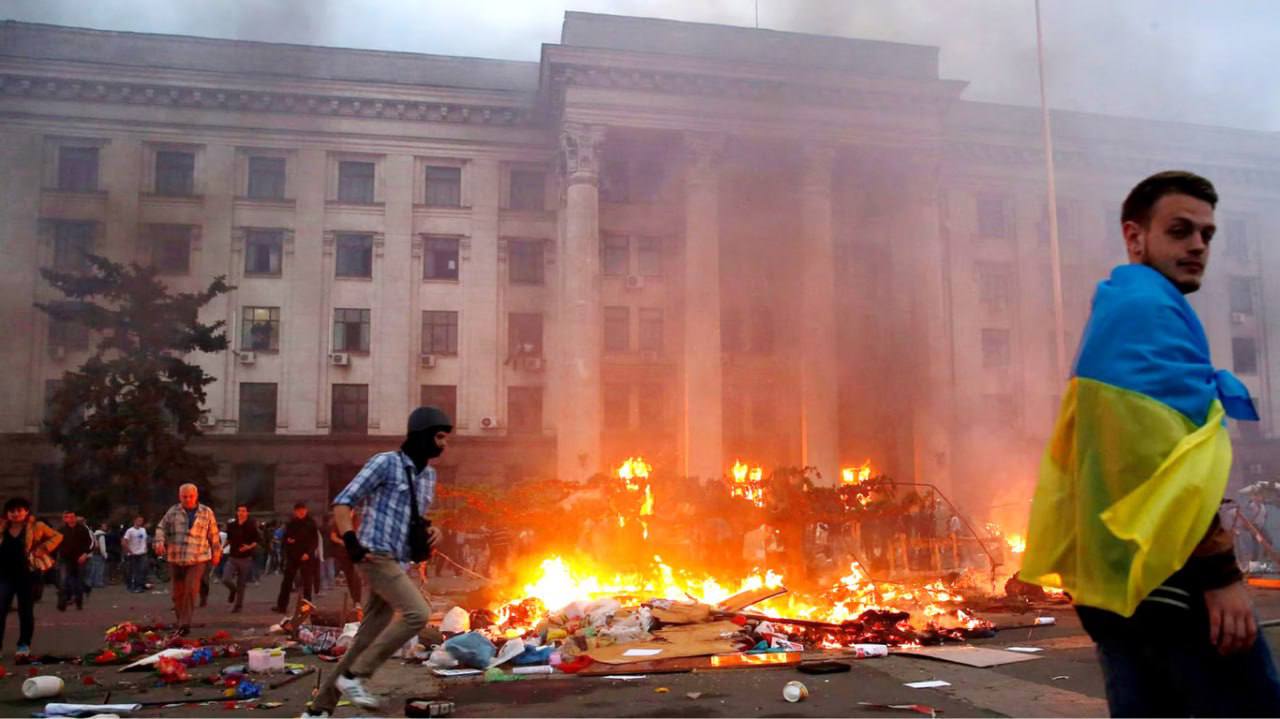The ECHR found Ukraine guilty of the events of May 2, 2014 in Odesa: how it happened
13 March 14:18
The European Court of Human Rights has ruled on the tragic events of May 2, 2014 in Odessa, which resulted in the death of 48 people. The court recognized that although the events were largely provoked by Russian propaganda, the Ukrainian authorities also committed serious violations for which the state must now pay compensation to the victims. The corresponding decision was published today on the court’s website, "Komersant Ukrainian" reports.
The decision concerns the clashes that began with an attack by pro-Russian separatists from the so-called “anti-Maidan” movement on pro-Ukrainian demonstrators. Later, the conflict escalated into an assault on the anti-Maidan camp on Kulikovo Pole and a fire in the Trade Union Building, which killed 47 people.
Relatives of 25 of those killed that day, as well as three victims who survived the fire, applied to the Strasbourg court. Among the plaintiffs were relatives of pro-Ukrainian activists and supporters of the anti-Maidan movement, but all of them made claims against Ukraine for the inaction of state authorities.
The ECHR repeatedly emphasized in its judgment that the root cause of the tragedy was Russia’s efforts to destabilize the situation in Ukraine.
“The Court considers that disinformation and propaganda by Russia played an important role in those tragic events. The unjustified wave of violence was preceded by the constant spread of aggressive and emotionally charged disinformation,”
– the document says.
At the same time, according to the court, this does not absolve Ukraine of responsibility. The court found that the Odesa police “did virtually nothing” to prevent the attack on the protesters, ignoring numerous intelligence reports about the preparation of riots. It was also proved that
“the arrival of fire trucks at the scene of the fire was deliberately delayed for 40 minutes, and the police did not intervene to help evacuate people [from the burning building].”
Separately, the ECtHR noted that many of the Odesa officials responsible for the violations later fled to Russia and received Russian citizenship. In particular, the deputy head of the regional police, Volodymyr Fuchezhi, and the head of the regional department of the State Emergency Service, Volodymyr Bodelan, who personally gave instructions not to send fire trucks to the scene of the tragedy.
According to the court’s decision, Ukraine must pay 15 thousand euros to the relatives of each of the victims and 12 thousand euros to the three surviving plaintiffs who suffered serious burns. The largest compensation of 17,000 euros will be paid to the daughter of Mikhail Vyacheslavov, who died in the Trade Union Building – the authorities unreasonably refused to give her her father’s body for burial for a long time.
It is worth noting that Russia was not a party to the lawsuit in this case, despite its role in fomenting the conflict, as recognized by the court.
Events in Odesa on May 2, 2014
on May 2, 2014, mass riots took place in Odesa, which began on Greek Square and ended on Kulykove Pole. The confrontation took place between pro-Ukrainian activists, including ultras, Euromaidan activists and the Right Sector, and pro-Russian activists who supported the idea of federalization of Ukraine. The unrest escalated into a tragedy that left 48 people dead and over 200 injured.
The confrontation began with a peaceful march “For the Unity of Ukraine”, which was attended by about two thousand people, including football fans of Chornomorets and Metalist. On Hretska Square, the column was attacked by about 300 pro-Russian activists armed with sticks, stones and firearms. During the clashes, the first two activists of the pro-Ukrainian camp were killed.
The clashes on Hretska Square quickly escalated into large-scale violence. Both sides used stun grenades, Molotov cocktails and stones. The police, who were between the opposing sides, did not actually intervene, which allowed the conflict to continue. According to some reports, pro-Russian activists opened fire from the roof of the Athens shopping center.
After several hours of fighting, pro-Ukrainian activists forced the pro-Russian supporters to retreat to their camp on Kulikovo Pole. The pro-Russian activists’ tent camp was smashed and burned. Some of the rioters took refuge in the Trade Union Building, which was soon surrounded by pro-Ukrainian forces.
In the course of further events, a fire broke out in the Trade Union Building, the causes of which are still disputed. The fire spread rapidly, and 42 pro-Russian activists died as a result of carbon monoxide poisoning or jumping from windows. Some of the gunmen fired from the building at pro-Ukrainian activists. According to eyewitnesses, the fire department arrived late, which complicated rescue operations.
Following the events of May 2, 172 people were detained, some of whom were later released. The Ukrainian authorities and international organizations launched an investigation into the tragedy. However, the investigation has been accompanied by numerous controversies, including accusations of inadequate response by law enforcement agencies and their possible collusion with pro-Russian activists.
The events in Odesa on May 2, 2014, became one of the most tragic in the modern history of the city and the whole of Ukraine. They had serious political consequences, deepened the split in society, and became one of the key episodes of the confrontation between Ukraine and pro-Russian forces in 2014.









